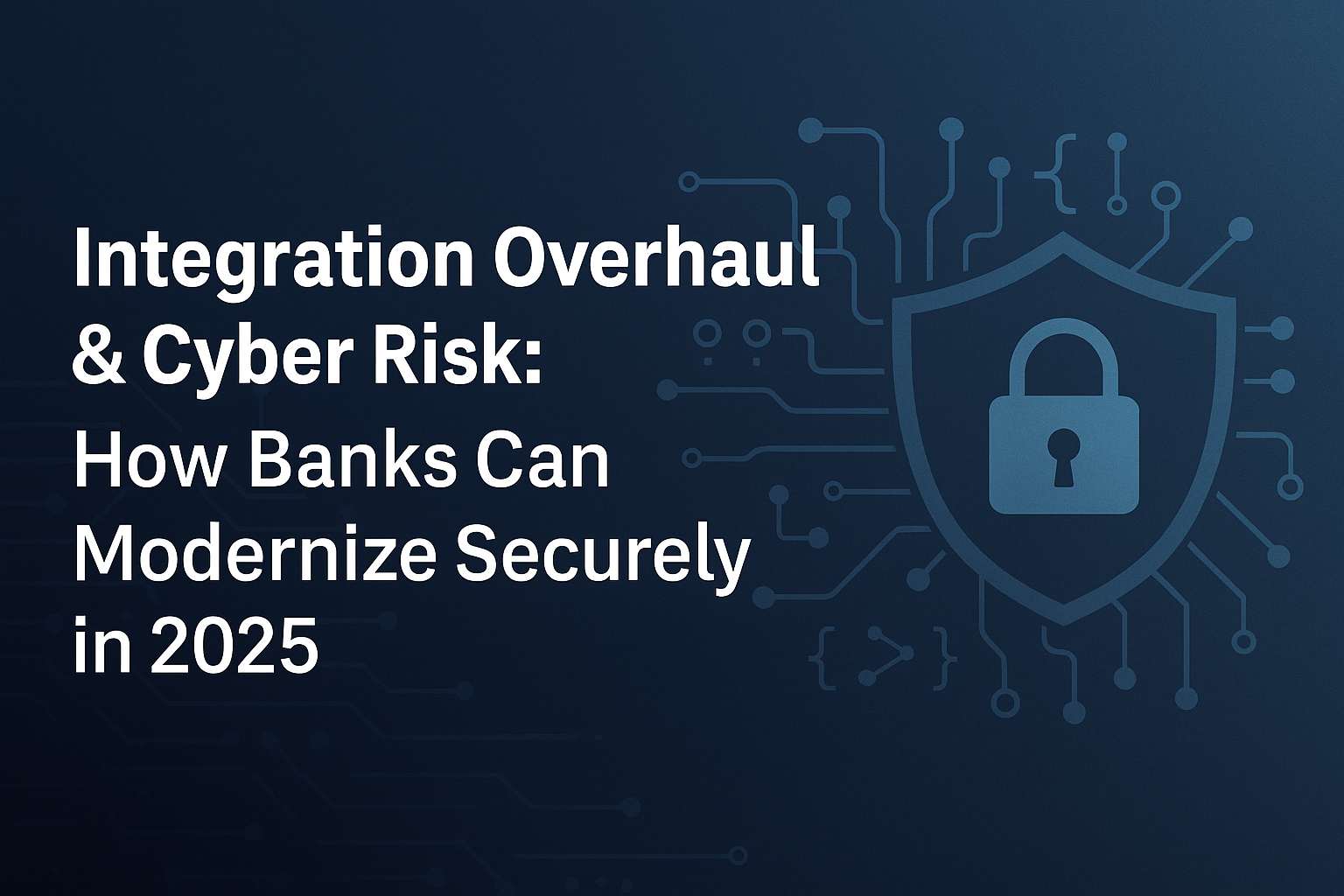For banks in 2025, modernization is no longer optional—it’s survival. Yet as digital ecosystems expand through APIs and fintech partnerships, the line between innovation and exposure blurs.
Legacy systems, third-party integrations, and open banking frameworks are introducing new vulnerabilities faster than many institutions can patch them. The result? A growing cybersecurity gap hiding behind “digital transformation” initiatives.
This blog explores how financial institutions can close that gap—modernizing their infrastructure securely while maintaining compliance and client trust.
The Modernization Imperative Meets Cyber Reality
As banks accelerate API adoption, partner with fintechs, and pursue embedded finance models, integration is now the defining battleground for competitiveness.
However, recent studies underscore the risks:
- 97% of banks cite cybersecurity and fraud as their top concern, according to Wipfli’s 2025 State of the Banking Industry report.
- Integration failures are among the top three deal-breakers for business clients evaluating new banking relationships (Greenwich, 2025).
- Regulators are responding with heightened scrutiny on third-party risk management and operational resilience. (OnCourse Learning, 2025).
The opportunity is clear: banks that can integrate safely—without sacrificing visibility, compliance, or resilience—gain a decisive competitive edge.
Cyber Risk: The Shadow of Connectivity
Interconnected systems are double-edged swords. Each integration point — whether an API, third-party tool, or cloud environment — is a potential attack vector.
Emerging Cyber Threats in 2025
- API Abuse & Credential Theft: Attackers target exposed or poorly secured APIs to exfiltrate data.
- Supply Chain Attacks: Vendors and partners become the weakest link in a bank’s security perimeter.
- Data Leakage from Misconfigurations: Rapid integrations without proper controls often expose sensitive client data.
- Lateral Movement Across Systems: Once inside, attackers use interconnected APIs to move silently between environments.
- Zero-Day Vulnerabilities in Middleware: Legacy components used in integrations are rarely patched on time.
A recent KPMG 2025 Banking Survey noted that over 60% of banks accelerated digital integrations this year, but fewer than half performed a dedicated cybersecurity review before deployment.
The result: a widening gap between innovation speed and risk control.
The Hidden Cost of Fragmentation
Integration failures and weak governance don’t just create technical risk — they directly affect the bottom line.
- Lost business: Corporate clients expect frictionless API connectivity for payments, treasury, and data analytics. Delays or downtime drive them to competitors.
- Compliance fines: Lack of data traceability or audit trails during integrations can trigger regulatory penalties.
- Operational inefficiency: Unsecured or undocumented integrations increase maintenance costs and reduce system reliability.
- Reputation damage: A breach caused by a third-party connection can erode decades of customer trust.
For banks, modernization without an integrated security framework is like building a skyscraper without a foundation.
A Roadmap for Secure Integration
The Saturn Partners recommend a four-phase approach that merges modernization with cybersecurity governance:
Phase 1: Assess & Architect
- Conduct an Integration Maturity Audit to identify legacy choke points and high-risk connections.
- Map all APIs, dependencies, and data flows to expose “shadow integrations.”
- Build a target architecture using modular, microservice-driven design and zero trust principles.
Phase 2: Secure by Design
- Deploy API gateways with authentication, throttling, and anomaly detection.
- Use tokenization and encryption-in-transit for sensitive transactions.
- Validate all partner systems through strict onboarding, vetting, and SLAs.
- Implement continuous security scanning of integration pipelines.
Phase 3: Pilot & Scale Safely
- Start with low-risk internal integrations before expanding to external fintech connections.
- Employ sandbox environments to test integrations before production.
- Maintain version control and rollback procedures for all APIs.
Phase 4: Monitor, Audit, and Adapt
- Enable real-time monitoring dashboards for integration health and security events.
- Conduct quarterly API penetration tests and annual red-team exercises.
- Maintain audit-ready logs and compliance documentation to support regulatory reviews.
Pro Tip: Integration security should never be “bolted on.” It must be engineered into the architecture from day one.
Case Example: Modernization with Measured Risk
A regional bank recently worked with The Saturn Partners to modernize its commercial banking platform using an API-first strategy. Before integration, we conducted a comprehensive security posture review, identifying over 200 legacy API endpoints with incomplete documentation.
By implementing centralized API gateways, tokenized credentials, and 24/7 behavioral monitoring, the bank reduced integration vulnerabilities by 67% in the first quarter post-deployment.
The result: faster onboarding for corporate clients, fewer integration errors, and complete audit compliance.
The Future: Integration as a Security Enabler
In 2025, secure integration is no longer optional — it’s the backbone of digital banking resilience. The banks that thrive will be those that:
- Treat integration and cybersecurity as a single discipline, not separate silos.
- Build partnerships only with auditable, compliant vendors.
- Invest in real-time observability and automated risk scoring for all connected systems.
Modernization doesn’t have to compromise compliance — when done right, it can strengthen it.
Conclusion
Banks that modernize securely will outpace their competitors in agility, trust, and regulatory confidence.
If your institution is embarking on an integration overhaul — or struggling with legacy security gaps —
The Saturn Partners can help design and implement a Secure Integration Framework that aligns with both innovation and compliance.
Talk to our experts about assessing your bank’s integration risk and building a modernization roadmap that strengthens security from the inside out.

